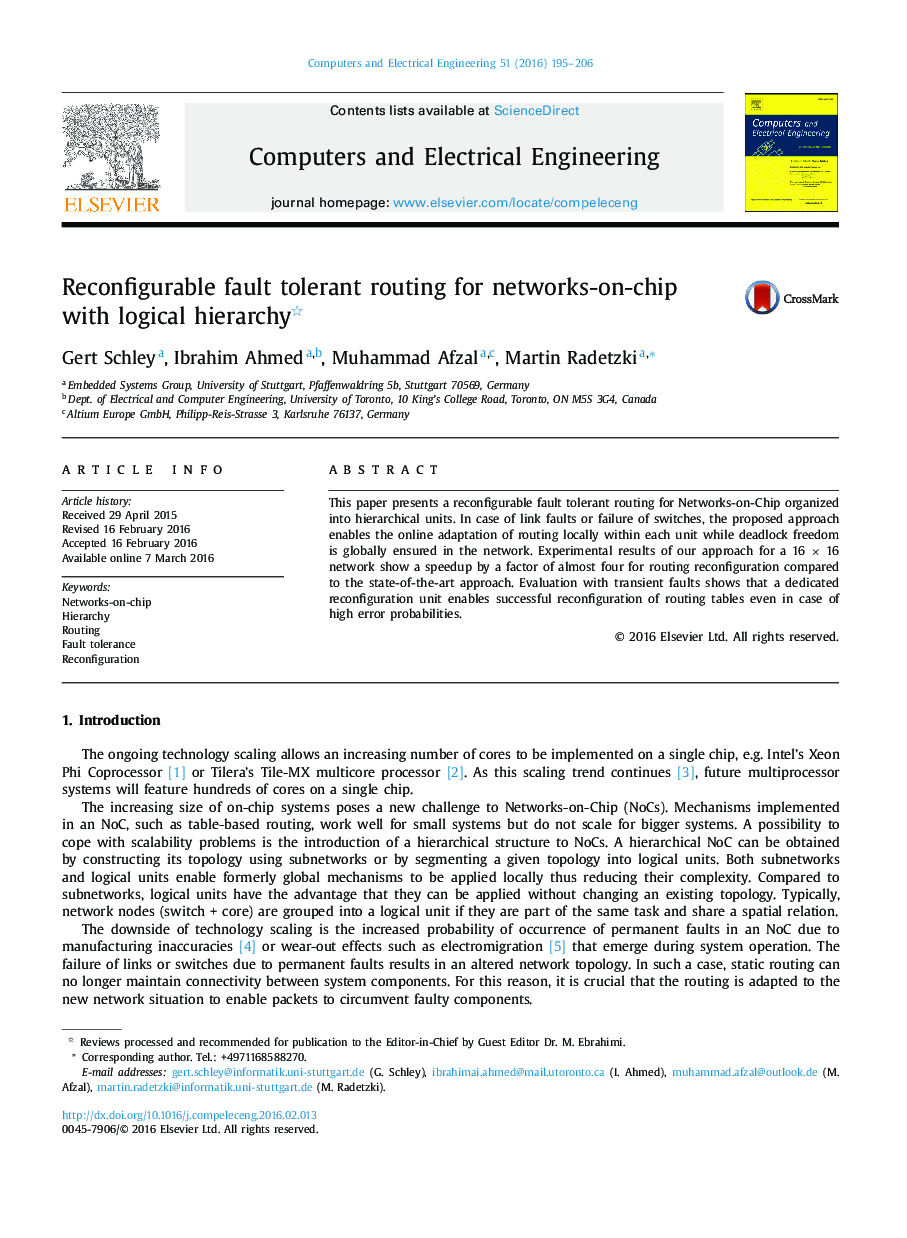| Article ID | Journal | Published Year | Pages | File Type |
|---|---|---|---|---|
| 453621 | Computers & Electrical Engineering | 2016 | 12 Pages |
•Adding logical hierarchy to networks-on-chip enables table-based routing without excessive chip area overhead. For a 256 node network, the routing table occupies only less than 20% of the switches area. Thanks to the hierarchical network organization, double data throughput is achieved, compared to a flat network of same size.•Table-based routing can be used to implement fault-tolerant routing by reconfiguring table entries. The article shows how table entries can be computed efficiently, and how the reconfiguration process can be organized to function reliably even in presence of transmission errors.•With proper choice of logical hierarchy, the reconfiguration process takes less than one third of the time required by Ariadne, the state-of-the-art approach for non-hierarchical networks.•The additional hardware overhead for fault-tolerant routing table reconfiguration amounts to only 6% of the chip area of a network switch.
This paper presents a reconfigurable fault tolerant routing for Networks-on-Chip organized into hierarchical units. In case of link faults or failure of switches, the proposed approach enables the online adaptation of routing locally within each unit while deadlock freedom is globally ensured in the network. Experimental results of our approach for a 16 × 16 network show a speedup by a factor of almost four for routing reconfiguration compared to the state-of-the-art approach. Evaluation with transient faults shows that a dedicated reconfiguration unit enables successful reconfiguration of routing tables even in case of high error probabilities.
